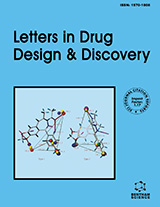Abstract
Quantitative structure-activity relationships (QSAR) are one of the most important methodologies for rational drug design. In QSAR, compounds are represented by chemical structure descriptors, and then statistical models are built to predict biological activities of candidate structures. In this paper, two principal topics in QSAR, variable selection and 3D-QSAR, are picked up and are reviewed in recent trend. The aim of variable selection is to construct a significant QSAR model by selecting important descriptors among from descriptor pool. Until now, many variable selection methods have been developed and proposed. On the other hand, molecular alignment is important factor of 3D-QSAR analysis because appropriate alignment is usually required to construct proper 3D-QSAR models. In addition, we review new QSAR methods using molecular surface properties, alignment independent QSAR methods, and 4D-QSAR methods.
Keywords: QSAR, variable selection, 3D-QSAR, molecular alignment, genetic algorithm, genetic programming
Current Computer-Aided Drug Design
Title: The Recent Trend in QSAR Modeling - Variable Selection and 3D-QSAR Methods
Volume: 3 Issue: 4
Author(s): Masamoto Arakawa, Kiyoshi Hasegawa and Kimito Funatsu
Affiliation:
Keywords: QSAR, variable selection, 3D-QSAR, molecular alignment, genetic algorithm, genetic programming
Abstract: Quantitative structure-activity relationships (QSAR) are one of the most important methodologies for rational drug design. In QSAR, compounds are represented by chemical structure descriptors, and then statistical models are built to predict biological activities of candidate structures. In this paper, two principal topics in QSAR, variable selection and 3D-QSAR, are picked up and are reviewed in recent trend. The aim of variable selection is to construct a significant QSAR model by selecting important descriptors among from descriptor pool. Until now, many variable selection methods have been developed and proposed. On the other hand, molecular alignment is important factor of 3D-QSAR analysis because appropriate alignment is usually required to construct proper 3D-QSAR models. In addition, we review new QSAR methods using molecular surface properties, alignment independent QSAR methods, and 4D-QSAR methods.
Export Options
About this article
Cite this article as:
Arakawa Masamoto, Hasegawa Kiyoshi and Funatsu Kimito, The Recent Trend in QSAR Modeling - Variable Selection and 3D-QSAR Methods, Current Computer-Aided Drug Design 2007; 3 (4) . https://dx.doi.org/10.2174/157340907782799417
| DOI https://dx.doi.org/10.2174/157340907782799417 |
Print ISSN 1573-4099 |
| Publisher Name Bentham Science Publisher |
Online ISSN 1875-6697 |
 15
15
- Author Guidelines
- Bentham Author Support Services (BASS)
- Graphical Abstracts
- Fabricating and Stating False Information
- Research Misconduct
- Post Publication Discussions and Corrections
- Publishing Ethics and Rectitude
- Increase Visibility of Your Article
- Archiving Policies
- Peer Review Workflow
- Order Your Article Before Print
- Promote Your Article
- Manuscript Transfer Facility
- Editorial Policies
- Allegations from Whistleblowers
Related Articles
-
Patent Selections
Recent Patents on CNS Drug Discovery (Discontinued) Undermining Tumor Angiogenesis by Gene Therapy: An Emerging Field
Current Gene Therapy Plants Indicated by Brazilian Indians for Disturbances of the Central Nervous System: A Bibliographical Survey
Central Nervous System Agents in Medicinal Chemistry Gallic Acid Improved Amytryptiline Effect in Neuropathic Pain Induced by Partial Sciatic Nerve Ligation (PSNL) in Rats
The Natural Products Journal Regulation of Female Fertility and Identification of Future Contraceptive Targets
Current Pharmaceutical Design Pancreatic Cancer in Obesity: Epidemiology, Clinical Observations, and Basic Mechanisms
Anti-Cancer Agents in Medicinal Chemistry Calcium-Sensing Receptor (CaSR) in Human Brains Pathophysiology: Roles in Late-Onset Alzheimers Disease (LOAD)
Current Pharmaceutical Biotechnology Consequences of Elevated Homocysteine During Embryonic Development and Possible Modes of Action
Current Pharmaceutical Design Non-Classical Drug Metabolism Enzymes: The Curious Case of Phenylalanine 4-Monooxygenase
Letters in Drug Design & Discovery Metabolites of Dietary Protein and Peptides by Intestinal Microbes and their Impacts on Gut
Current Protein & Peptide Science Heparan Sulphate as a Regulator of Leukocyte Recruitment in Inflammation
Current Protein & Peptide Science Soft Condensed Matter in Pharmaceutical Design
Current Pharmaceutical Design Inflammatory Biomarkers Predicting Events in Atherosclerosis
Current Medicinal Chemistry Recent Advances in the Treatment of Interstitial Lung Disease in Patients with Polymyositis/Dermatomyositis
Endocrine, Metabolic & Immune Disorders - Drug Targets Similarities Between Pre-Eclampsia and Atherosclerosis: A Protective Effect of Physical Exercise?
Current Medicinal Chemistry Targeting Inflammatory Mediators: An Anticancer Mechanism of Thymoquinone Action
Current Medicinal Chemistry Fight Against H1N1 Influenza A Virus: Recent Insights Towards the Development of Druggable Compounds
Current Medicinal Chemistry The Role of ABC and SLC Transporters in the Pharmacokinetics of Dietary and Herbal Phytochemicals and their Interactions with Xenobiotics
Current Drug Metabolism Gene Control of Synaptic Plasticity and Memory Formation: Implications for Diseases and Therapeutic Strategies
Current Molecular Medicine Targeting Platelet-Neutrophil Interactions in Giant-Cell Arteritis
Current Pharmaceutical Design


























